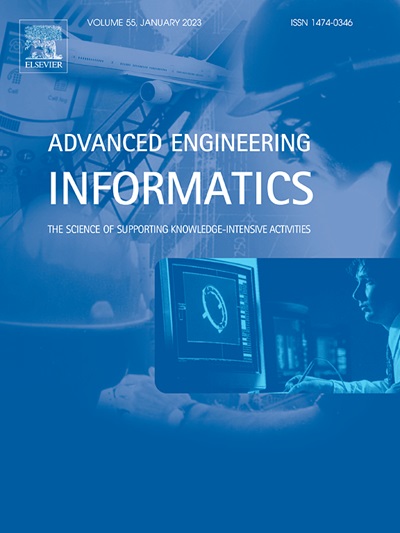Integrating crack pattern entropy measures with synthesized learners for accumulated seismic damage evaluation in reinforced concrete frames
IF 8
1区 工程技术
Q1 COMPUTER SCIENCE, ARTIFICIAL INTELLIGENCE
引用次数: 0
Abstract
Reliable decision-making for reinforced concrete buildings affected by earthquakes relies on realistically measuring accumulated seismic damage. The limitations and uncertainties of vision-based qualitative subjective inspection highlight the necessity of quantitative assessment approaches. In this paper, an integrated method is developed for post-earthquake inspection of reinforced concrete buildings, using crack texture entropy quantification and the well-known cumulative Park-Ang damage quantification model. A comprehensive database comprising 969 crack textures is collected by the authors from cyclic-tested beam-column sub-assemblages. For beam, column, and joint crack textures, the multi-scale pixel-based Renyi entropy measures are computed through box-counting, and results are then linked to the associated experimentally computed structural accumulated damage. The dissipated energy weight, β, in the Park-Ang damage index is calculated by collapse state response for all specimens. Contrary to simplified speculations and error-prone β equations, this strategy controlled the damage index divergence from 1 at failure. The influential crack image-related measures are detected by correlation analysis and also by non-linear permutation feature importance. Two alternative scenarios are organized for the intelligent inspection of structures according to post-earthquake circumstances based on structural information accessibility/inaccessibility. Soft machine learning-based algorithms, encompassing eight diverse-structured techniques, are synthesized with Aquila optimizer to improve efficiency and generalizability. In the first alternative, the Gaussian process regression provided satisfactory prediction with the coefficient of determination equal to 0.87 despite lacking structural information merely using crack image-based measures. This score reached 0.89 by adding structural parameters to the first alternative inputs in the Categorical Boosting model. The slight improvement in the accuracy of the second alternative demonstrates crack pattern adequacy in the quantitative inspection. Afterward, the seismic damage limits of crack pattern entropy measures are extracted using the model explanation, and the efficiency of the proposed approach is proved by assessing new crack images.
求助全文
约1分钟内获得全文
求助全文
来源期刊

Advanced Engineering Informatics
工程技术-工程:综合
CiteScore
12.40
自引率
18.20%
发文量
292
审稿时长
45 days
期刊介绍:
Advanced Engineering Informatics is an international Journal that solicits research papers with an emphasis on 'knowledge' and 'engineering applications'. The Journal seeks original papers that report progress in applying methods of engineering informatics. These papers should have engineering relevance and help provide a scientific base for more reliable, spontaneous, and creative engineering decision-making. Additionally, papers should demonstrate the science of supporting knowledge-intensive engineering tasks and validate the generality, power, and scalability of new methods through rigorous evaluation, preferably both qualitatively and quantitatively. Abstracting and indexing for Advanced Engineering Informatics include Science Citation Index Expanded, Scopus and INSPEC.
 求助内容:
求助内容: 应助结果提醒方式:
应助结果提醒方式:


